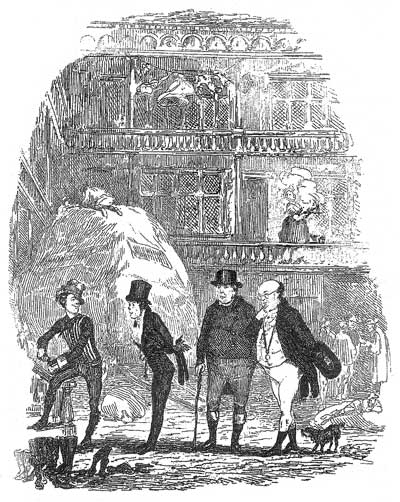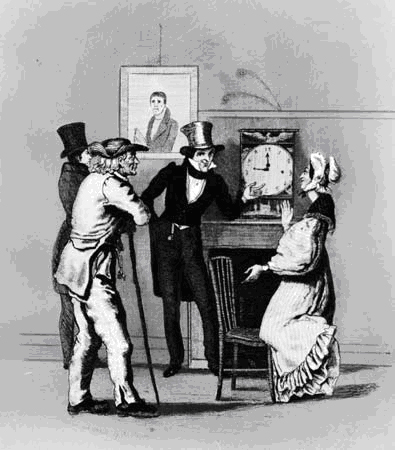It was not looking like a success. It was meant to be an amusing satiric picture postcard of a book about the exploits of lower middle class sportsmen who aped their betters. The writing was merely meant to wrap around a series of pictures — for the whole concept originated with an artist.
To do the writing, the publisher hired a young Parliamentary shorthand reporter who had recently gained a bit of a reputation with a few short stories. The ambitious 23-year old cunningly convinced the publisher to let him ignore the pictures and take the book in a direction all of his own.
As was the practice in those days, the book was published in parts. Each month another couple of chapters came out at 1 shilling a copy. And each month sales fell.
By the second month the artist committed suicide.
The publisher was contemplating ceasing publication. Someone must have issued an ultimatum to the writer. This made him desperate and so he may have committed the almost unforgiveable sin — he may have stolen a character from another, more successful writer. The result? From the fourth edition with this new character established, the book took off. From dwindling sales of 1,000 a month, it ballooned to 40,000 an episode by the end of the run.
From this lucky break, the writer went on to become the most famous novelist in the English language. He was of course Charles Dickens. The book was The Pickwick Papers.  Sam Weller was character who saved Pickwick. However, quite a few readers at the time recognised that the Cockney Sam Weller’s wit and commonsensical aphorisms were suspiciously similar to another fictional chancer also named Sam, with his own sheaf of worldly sayings.
Sam Weller was character who saved Pickwick. However, quite a few readers at the time recognised that the Cockney Sam Weller’s wit and commonsensical aphorisms were suspiciously similar to another fictional chancer also named Sam, with his own sheaf of worldly sayings.
The original was no Cockney; he was a Yankee. Weller, who first appeared in print in 1836 was very, very closely modelled on the massively successful character ‘Sam Slick the clockmaker of Slickville’. The previous year Sam Slick had become a household name in America and well-known in England, though a book had yet to be published in London.
Let’s be charitable and say it was a co-incidence, but the hyperactive young Dickens was already preparing to edit Bentley’s Miscellany that same year and must have been casting around for new writers and new writing.
Sam Slick was the invention not of an American author, but of a Canadian judge named Thomas Chandler Haliburton. The Spectator called Haliburton one of the shrewdest of humorists.

Judge Haliburton began his literary career writing dry as dust gazetteers of his native Nova Scotia and works such as An Historical and Statistical View of Nova Scotia, but when he wrote of Sam Slick in a series of newspaper sketches he became an almost overnight success on both sides of the Atlantic.
An example of Slickisms?And remember this was 1835, not 1895. Try this description of his horse, Old Clay. Said Sam: “He can pick up miles on his feet, throw ’em behind him quicker than a steam doctor a-racin’ off with another man’s wife.”
Retiring from his role as Canadian Supreme Court judge to become a fulltime writer, Haliburton moved to a big Thames-side villa near London in 1856. In 1859 Haliburton stood as an MP for Launceston in Cornwall. He made no pretence that the good people of could count on him to visit often. In his speech to the electors he thanked them, according to his biographer “for allowing the four millions of British subjects on the other side of the water who up to the present time had not one individual in the House of Commons through whom they might be heard.”
When he died in 1865 he was buried in the local church, also the last resting place of George Vancouver, the man who gave Canada’s western capital its name. Admiral Vancouver, who died aged 40 in 1798 had the dubious honour of being beaten up on a public street by Pitt the Younger, Britain’s youngest Prime Minister. But that’s another story.
